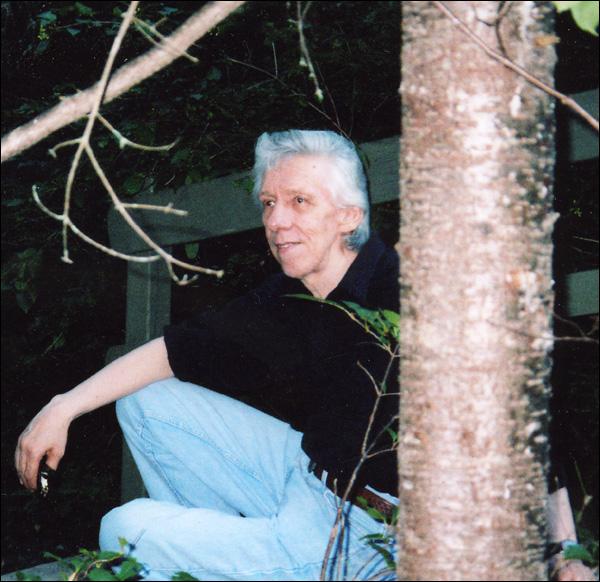Enos Watts (1939-)
Enos Watts’s poetry, often identified as Newfoundland gothic, is a contradiction to his jovial character. Born in Long Pond, Conception Bay South, to Marion and Willis Watts, Salvation Army Officers, Enos Watts, like E.J. Pratt, experienced a rootless youth. Travelling extensively throughout Newfoundland with his parents during his childhood, including Musgrave Harbour, Hants Harbour, Bay Roberts and Dover, he often credits his mother, a lover of nature and people watcher, as influencing his literary sensitivity. In his early years, he enjoyed writing, particularly essays, but he did not take a keen interest in poetry until 1973, after beginning to read Canadian literature, particularly Margaret Atwood’s The Journals of Susanna Moodie, along with Al Purdy, Earle Birney and Irving Layton.

Watts’s predominately free verse poetry employs a variety of stark images that crystallize his thoughts in tandem with an often minimalist style that parses down every line in order to produce a direct effect. Although his work is often credited for his sombre tones, Watts believes they are not a reflection of his nature. He acknowledges, however, that the dark side of life is often the reality and that his cultural tradition as a Newfoundlander has sparked his composition in this manner. His most recent work, Spaces Between the Trees, reflects his style in relation to his character, often depicting satirical moments between the larger, darker picture. His later work, Autumn Vengeance, reflects the morbid, melancholy atmosphere of autumn, infused with emotions of fear, sorrow, pain of loss, hopelessness and anger, while exhibiting poems that project a sense of hope and compassion. The content of his poetry is diverse, ranging from Sylvia Plath, Michelangelo, nature, crows, Newfoundland coastlines, India, and Europe. His earliest work, After the Locusts, is primarily defined as a book of the heart, rather than the head.
Adding to his three published books, his work has appeared in numerous local, regional, national and international journals and anthologies, such as The Antigonish Review, TickleAce, The Canadian Author and Bookman, Event, Waves, and a two volume Irish and Newfoundland and Labrador Poetry anthology. He has also written book reviews and edited manuscripts over the last thirty years. He was shortlisted for the Winterset Award in 2006 for Spaces Between the Trees.
“High Wind in November”
Strung taut on its spools
to one note
our clothesline is humming
Across a field a newspaper,
mad ragged bird,
spins into the air
clears the roof of a school
and everywhere tall
grass hissing
where thistles
like grizzled old men are
nodding, nodding…
Snagged on a branch all morning
a garbage bag,
anarchy’s flag,
has crackled and buzzed
At midfield, solid,
a woman
in sweater and bandanna
leans into it
holding her own




